The tragedy of Marvin Gaye: From changing the course of soul music to dying at the hands of his father
The Motown artist met a tragic end on April 1, 1984, when his father shot him in the middle of a family argument with the gun that he himself had given him
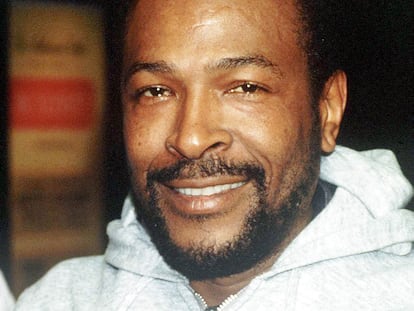
April 1 is April Fools’ Day. That is why, when the news broke on April 1, 1984, that singer Marvin Gaye had been shot dead by his own father, many thought it was a joke in poor taste. The tragedy took place on the eve of what was to be Gaye’s 45th birthday. The fatal history of pop music was already well-populated with the deaths of some of its brightest stars by suicide, overdose, automobile, or plane accidents, but that an artist should die at the hands of his own father was unthinkable.
An element that added to the sense of disbelief is that the motive was apparently banal, the result of an argument between Gaye’s father and mother in the house the family shared at the time in Los Angeles, over insurance papers. The singer, under the effects of cocaine and PCP, reacted by physically attacking his father. The latter pulled out the revolver that his son had given him a few months earlier, turned on him, and shot him twice. The first bullet, straight through the heart, was lethal. A jury exonerated Marvin Gay Sr. based on self-defense (the artist adopted Gaye as his artistic surname). His wife, Alberta Cooper, immediately asked for a divorce. Gay died of pneumonia in a nursing home in 1998, at the age of 84. In reality, those who had followed Gaye’s career were not surprised by what happened. Such a tragic end to his life was something that, in a way, they had seen coming.
Marvin Gaye’s charisma, as the creator of a body of work full of humanism and a few odes to love, from the most spiritual to the most lubricious, contrasts with a tormented life, weighed down by the turbulent relationship with the man who gave and later took his life. Marvin Gay Sr. was a preacher belonging to the so-called House of God, a conservative Christian congregation with elements of Pentecostalism and Orthodox Judaism that demanded adherence to strict codes of conduct. Gay was not so strict on himself, however: according to his family, he was an alcoholic and prone to extramarital affairs. Cruelty and domestic violence were all too common during the musician’s childhood and adolescence.
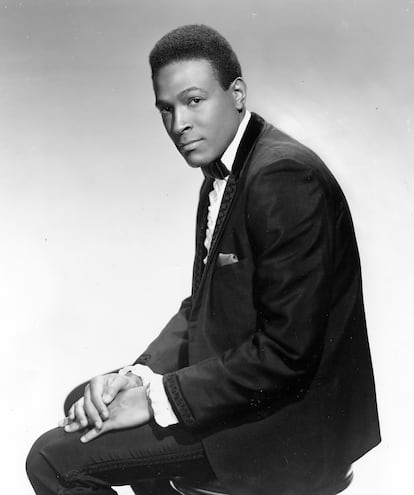
“This explains Marvin’s permanent obsession with sex, which he carried with a great sense of guilt,” explains music critic Luis Lapuente. It has been said that the young Marvin changed his original surname because of the continuous bullying he was subjected to by other children, who were fond of ridiculing him with all kinds of homophobic insults, although a more mythomaniacal story suggests he did so to emulate his idol Sam Cooke (né Cook). In his sister Zeola Gaye’s memoir, My Brother Marvin, she recounts that their father used to wear women’s clothes at home, which tormented and traumatized the singer.
Even at the height of his success, Gaye rarely enjoyed his popularity and was plunged into multiple contradictions. He was one of the great champions of social justice, but, at the same time, he went into exile in London and in the Belgian city of Ostend in the early 1980s because of his problems with the U.S. tax authorities. At that time, he is remembered as a compulsive consumer of pornography and a cocaine addict with suicidal tendencies and a paranoid temperament that led him to become convinced there was a plot to assassinate him, leading him to frequently wear bulletproof vests. It was this paranoia that prompted him to give his father the .38 caliber Smith & Wesson revolver with which the latter killed him, instead of using it for his own protection.
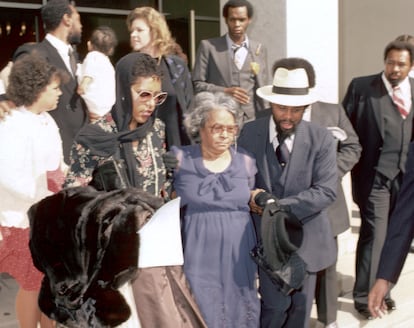
The tragic dimension of Gaye’s death was enhanced by the contrast between the erratic state of his life at the time and his magnificent creative and commercial moment. In 1982, he had released Midnight Love, which, particularly due to the track Sexual Healing, had become the most successful album of his career. In 1983, he was asked to sing the U.S. national anthem at halftime of the NBA All-Star Game.
Midnight Love was the final work in a career that was cut short too soon. “It’s hard to predict what would have happened next. I like to imagine that he would have gone on to release some great records in that vein, so sensual, and that maybe he would have made a great gospel album, double-sided and live, like Aretha Franklin’s Amazing Grace. And that he would have recorded some contemporary soul albums with producers like Danger Mouse, for example. But who knows, maybe he would have become a faded glory and ended up singing in Las Vegas casinos,” says Lapuente, a disco and soul music scholar and author.
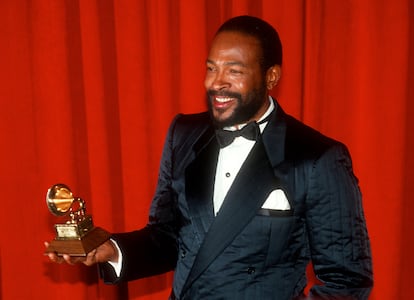
Friction with Motown
There are more biographical factors that ended up shaping Gaye’s work, as Lapuente notes. “When his brother Frankie returned from Vietnam and he learned first-hand about the atrocities of that war, he felt the need to record What’s Going On, with that pacifist and spiritual air that oozes from his songs.” The record, released in 1971, is unanimously considered one of the capital works in the history of popular music. “With that album, Marvin contributed to changing the course of the Motown label, and of soul, at a key moment, and for several reasons. First, he was one of the first Black artists to make the leap from the song format to the concept album. In addition, he was committed to a very social and radical approach to subjects such as racial equality or ecology, which, at that time, was almost an unknown topic. With that album, he also recognized for the first time the importance of Motown’s great studio musicians by including their names in the credits.”
Gaye’s relationship with the iconic Detroit label also had its ups and downs. His first forays with Motown, headed by the aggressive Berry Gordy, were made by combining some singles as a vocalist with work as a session drummer, until 1962 when he had his first big hit, That Stubborn Kinda Fellow.
A year later he married Anna Gordy, the boss’s sister, but that didn’t make his life any easier either. Another of his most mournful memories was when, during a performance, singer Tammi Terrell (with whom he had recorded a number of hit duets, such as Ain’t No Mountain High Enough) collapsed in his arms. Diagnosed with a brain tumor, Terrell passed away in 1970, plunging Gaye into a deep depression. He even considered quitting music at that time to pursue an NFL career. Berry also didn’t take kindly to his brother-in-law’s turn on What’s Going On, as it was risky for him to deliver such a politicized work. According to the Motown boss, it could ruin the reputation of the singer of I Heard It Through The Grapevine as a soul heartthrob for all audiences, and of Motown itself as a cool and apolitical music factory.
Gaye’s marital relationship with Anna Gordy was another big problem in his life. They separated in 1973, but their divorce process was stormy and only concluded four years later. “When the marriage broke up,” Lapuente recalls, “Marvin recorded another of his great LPs, Here, My Dear, with turbulent songs with autobiographical overtones. The profits from the sales of that album were to go entirely to Anna, as specified in the divorce settlement.” That happened in 1978, but in the meantime, in 1973, he released another historic album, Let’s Get It On, “another concept album, this time focused on sex, thus inaugurating a whole subgenre within soul, through which artists such as Teddy Pendergrass, Luther Vandross, R. Kelly and many more would travel until today,” Lapuente points out.
It can be said, in fact, that these two key works have been extremely influential up to the present day. Especially What’s Going On, the first attempt to build what could be called the great African-American album, an ambitious work that would pave the way for Prince (Sign o’ the Times), Public Enemy (It Takes A Nation Of Millions To Hold Us Back), Kanye West (My Beautiful Dark Twisted Fantasy), Beyoncé (Lemonade), Kendrick Lamar (To Pimp A Butterfly), D’Angelo (Black Messiah) or Kamasi Washington (The Epic).
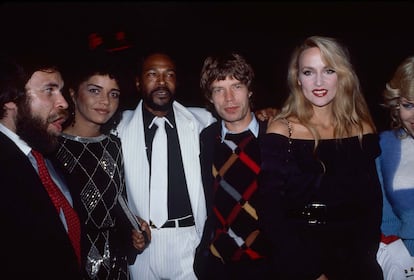
Cursed man, cursed biopic
Forty years after his death, in Marvin Gaye’s biography we find another great American story. Through it can be inferred, in parallel, very relevant ideas about the development of the music industry and show business with the evolution of soul music itself. About the unhealthy, traumatic relationship between the fascination with firearms, sex, religion, and domestic violence. About the beginning and the end of the hippie utopia in collision with the assassinations of John F. Kennedy and Martin Luther King, the arrival of the Black Panthers and the struggle for civil rights, up until the yuppie culture that emerged during the Ronald Reagan administration.
It is, in short, incredible that Gaye’s story has not yet seduced Hollywood, although there has been no shortage of attempts, especially in recent years. In 2006, the Sexual Healing project was launched, with James Gandolfini and Jean-Luc Van Damme among the surprising cast of producers. The biopic intended to narrate the final three years of the singer’s life, with Gaye to be portrayed by Jesse L. Martin, who bears a reasonable resemblance, directed by Lauren Goodman. The film’s development has taken countless turns since then. In a second attempt, it was decided that the director would be the renowned Julien Temple and that the lead actor would be Lenny Kravitz, who went to Ostend and visited some of the key places in Gaye’s life but finally dropped out of the project. According to IMDB, the film is still in production, with Temple as director and Jesse L. Martin again slated to play Gaye.
In 2008, it was suggested that F. Gary Gray, director of the N.W.A. biopic Straight Outta Compton, would bring Marvin Gaye to the screen in a movie that would cover the singer’s entire biography. Around the same time, Cameron Crowe (Almost Famous) embarked on a project entitled My Name Is Marvin, with speculation that it would star Will Smith, but the director declared in 2011 that it was not the right time to make that film. Five years later, the filming of a series in which Jamie Foxx would play Gaye was announced, and, in 2018, Dr. Dre decided to produce another film, to be directed by Allen Hughes. None of these projects has seen the light of day. It has been rumored that, fundamentally, this is because of the refusal of the singer’s heirs to sanction them.
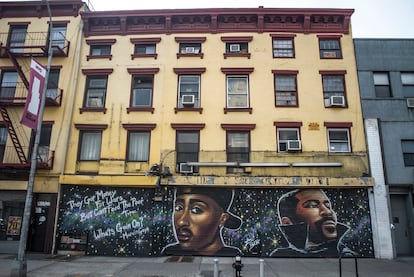
Sign up for our weekly newsletter to get more English-language news coverage from EL PAÍS USA Edition
Tu suscripción se está usando en otro dispositivo
¿Quieres añadir otro usuario a tu suscripción?
Si continúas leyendo en este dispositivo, no se podrá leer en el otro.
FlechaTu suscripción se está usando en otro dispositivo y solo puedes acceder a EL PAÍS desde un dispositivo a la vez.
Si quieres compartir tu cuenta, cambia tu suscripción a la modalidad Premium, así podrás añadir otro usuario. Cada uno accederá con su propia cuenta de email, lo que os permitirá personalizar vuestra experiencia en EL PAÍS.
¿Tienes una suscripción de empresa? Accede aquí para contratar más cuentas.
En el caso de no saber quién está usando tu cuenta, te recomendamos cambiar tu contraseña aquí.
Si decides continuar compartiendo tu cuenta, este mensaje se mostrará en tu dispositivo y en el de la otra persona que está usando tu cuenta de forma indefinida, afectando a tu experiencia de lectura. Puedes consultar aquí los términos y condiciones de la suscripción digital.
More information
Archived In
Últimas noticias
There is as much life left to discover on planet Earth as that which is already known
Dozens presumed dead, around 100 injured in fire at Swiss Alps bar during New Year’s celebration
Is porn for women different from conventional porn? We spoke to those who make it
Cartagena de Indias is sinking: What can the city do to mitigate it?
Most viewed
- Reinhard Genzel, Nobel laureate in physics: ‘One-minute videos will never give you the truth’
- Sinaloa Cartel war is taking its toll on Los Chapitos
- David King, chemist: ‘There are scientists studying how to cool the planet; nobody should stop these experiments from happening’
- Oona Chaplin: ‘I told James Cameron that I was living in a treehouse and starting a permaculture project with a friend’
- The Interoceanic Train, the Mexican alternative to the Panama Canal










































